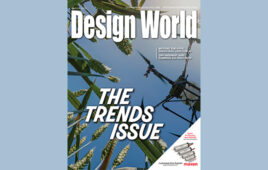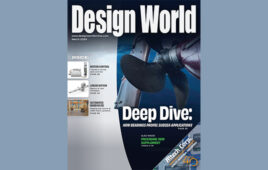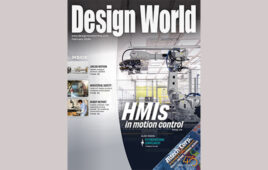In this issue:
16 Sensors drive IIoT innovations
40 Batteries for the Industrial Internet of Things
52 Harvesting power for IoT devices
60 The new era of design for the IIot
Researchers ink nanocrystal FETs onto plastic substrate
 A group at the University of Pennsylvania has patterned nanocrystal-based field effect transistors onto flexible plastic backings. The group used ordinary spin coating to create the FETs but say the devices could eventually be constructed by 3D printers.
A group at the University of Pennsylvania has patterned nanocrystal-based field effect transistors onto flexible plastic backings. The group used ordinary spin coating to create the FETs but say the devices could eventually be constructed by 3D printers.
The researchers devised four different inks for the work: a conductor with silver nanoparticles, an insulator containing aluminum oxide, a semiconductor of cadmium selenide, and a conductor combined with a silver and indium dopant for doping the semiconductor layer of the transistor with impurities.
To make FETs, researchers first deposited the conductive silver nanocrystal ink on a flexible plastic surface treated with a photolithographic mask, then rapidly spun the surface to spin coat it. The mask was then removed to leave the silver ink in the shape of the transistor’s gate electrode. Next came a spin-coated layer of the aluminum oxide nanocrystal-based insulator, then a layer of the cadmium selenide nanocrystal-based semiconductor, and finally another masked layer for the indium/silver mixture, which forms the transistor’s source and drain electrodes.
Application of relatively low heat caused the indium dopant to diffuse from those electrodes into the semiconductor component.
Researchers note it was a bit tricky to add a layer without washing off the layer beneath it. So there were special treatments added both when the nanocrystals were in solution and when they had been deposited so they had the right electrical properties and would stick together. The ink-based fabrication process works at temperatures much lower than those of existing vacuum-based methods.
“Making transistors over larger areas and at lower temperatures have been goals for an emerging class of technologies, when people think of the Internet of things, large area flexible electronics and wearable devices,” said lead researcher Cherie Kagan, the Stephen J. Angello Professor in the School of Engineering and Applied Science. “We haven’t developed all of the necessary aspects so they could be printed yet, but because these materials are all solution-based, it demonstrates the promise of this materials class and sets the stage for additive manufacturing.”
Filed Under: 3D printing • additive • stereolithography, DIGITAL ISSUES • DESIGN WORLD





Tell Us What You Think!